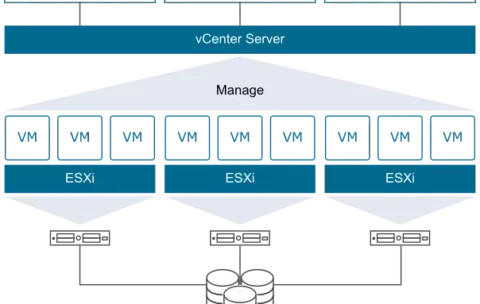Filter by Topic
Filter by Vendor
Introducing Automation for Cisco Solutions (CSAU) eLearning
Course Description: The Introducing Automation for Cisco Solutions (CSAU) v1.0 …
What you'll learn
Articulate the role network automation and programmability play in the context of end-to-end network management and operations
Define and differentiate between waterfall and agile software development methodologies
Interpret and troubleshoot Python scripts with fundamental programming constructs built for network automation use cases
Describe how DevOps principles, tools, and pipelines can be applied to network operations
Understand the role of network automation development environments and associated technologies such as Python virtual environments, Vagrant, and Docker
Understand and construct HTTP-based API calls to network devices
Articulate the differences among and common use cases for XML, JSON, YAML, and Protobuf
Construct and interpret Python scripts using the Python requests module to automate devices that have HTTP-based APIs
Understand the role YANG plays in network automation
Understand that a number of tools exist to simplify working with YANG models
Describe the functionality of RESTCONF and NETCONF and the differences between them
Construct Ansible playbooks to configure network devices and retrieve operational state data from them
Build Jinja2 templates and YAML data structures to generate desired state configurations
Cisco Prime Performance Manager (CPPERF) eLearning
Course Description The Cisco Prime Performance Manager (CPPERF) Cisco Training …
Understanding Cisco Collaboration Foundations (CLFNDU) eLearning
Course Description: The Understanding Cisco Collaboration Foundations (CLFNDU) v1.1 course …
What you'll learn
Define collaboration and describe the main purpose of key devices in a Cisco collaboration on-premise, hybrid, and cloud deployment model
Configure and modify required parameters in Cisco Unified CM including service activation, enterprise parameters, CM groups, time settings, and device pool
Deploy and troubleshoot IP phones via auto registration and manual configuration within Cisco Unified CM
Describe the call setup and teardown process for a SIP device including codec negotiation using Session Description Protocol (SDP) and media channel setup
Manage Cisco Unified CM user accounts (local and via Lightweight Directory Access Protocol [LDAP]) including the role/group, service profile, UC service, and credential policy
Configure dial plan elements within a single site Cisco Unified CM deployment including Route Groups, Local Route Group, Route Lists, Route Patterns, Translation Patterns, Transforms, SIP Trunks, and SIP Route Patterns
Configure Class of Control on Cisco Unified CM to control which devices and lines have access to services
Configure Cisco Unified CM for Cisco Jabber and implement common endpoint features including call park, softkeys, shared lines, and pickup groups
Deploy a simple SIP dial plan on a Cisco Integrated Services Router (Cisco ISR) gateway to enable access to the PSTN network
Manage Cisco UCM access to media resources available within Cisco UCM and Cisco ISR gateways
Describe tools for reporting and maintenance including Unified Reports, Cisco Real-Time Monitoring Tool (RTMT), Disaster Recovery System (DRS), and Call Detail Records (CDRs) within Cisco Unified CM
Describe additional considerations for deploying video endpoints in Cisco Unified CM
Describe the integration of Cisco Unity with Cisco Unified CM and the default call handler
Understanding Cisco Cybersecurity Operations Fundamentals (CBROPS) eLearning
Course Description: The Understanding Cisco Cybersecurity Operations Fundamentals (CBROPS) v1.0 …
What you'll learn
Explain how a SOC operates and describe the different types of services that are performed from a Tier 1 SOC analyst’s perspective
Explain Network Security Monitoring (NSM) tools that are available to the network security analyst
Explain the data that is available to the network security analyst
Describe the basic concepts and uses of cryptography
Describe security flaws in the TCP/IP protocol and how they can be used to attack networks and hosts
Understand common endpoint security technologies
Understand the kill chain and the diamond models for incident investigations, and the use of exploit kits by threat actors
Identify resources for hunting cyber threats
Explain the need for event data normalization and event correlation
Identify the common attack vectors
Identify malicious activities
Identify patterns of suspicious behaviors
Conduct security incident investigations
Explain the use of a typical playbook in the SOC
Explain the use of SOC metrics to measure the effectiveness of the SOC
Explain the use of a workflow management system and automation to improve the effectiveness of the SOC
Describe a typical incident response plan and the functions of a typical Computer Security Incident Response Team (CSIRT)
Explain the use of Vocabulary for Event Recording and Incident Sharing (VERIS) to document security incidents in a standard format
PECB Certified ISO 22301 Lead Auditor eLearning Training Course
Course Description As the world is moving faster than ever, …
What you'll learn
Explain the fundamental concepts and principles of a Business Continuity Management System (BCMS) based on ISO 22301
Interpret the ISO 22301 requirements for a BCMS from the perspective of an auditor
Evaluate the BCMS conformity to ISO 22301 requirements, in accordance with the fundamental audit concepts and principles
Plan, conduct, and close an ISO 22301 compliance audit, in accordance with ISO/IEC 17021-1 requirements, ISO 19011guidelines, and other best practices of auditing
Manage an ISO 22301 audit program
PECB Certified ISO 22301 Lead Implementer eLearning Training Course
Course Description Technological developments have taken the world by storm, …
What you'll learn
Understand the concepts, approaches, methods, and techniques used for the implementation and effective management of a BCMS
Learn how to interpret and implement the requirements of ISO 22301 in the specific context of an organization
Understand the operation of the business continuity management system and its processes based on ISO 22301
Learn how to interpret and implement the requirements of ISO 22301 in the specific context of an organization.
VMware vSphere: Skills for Operators 6.7
Course Description This two-day training course is for operators and …
What you'll learn
Describe virtualization, virtual machines, and vSphere components
Describe the concepts of server, network, storage, and desktop virtualization
Deploy, configure, clone, and manage virtual machines
Use VMware vCenter Server® to monitor virtual machine resource usage
Use VMware vSphere®vMotion® and VMware vSphere® Storage vMotion®to migrate virtual machines
Use VMware vSphere® Distributed Resource Scheduler™ and VMware vSphere® High Availability to optimize the performance of your vSphere virtual environment
VMware vSphere: Optimize and Scale plus Troubleshooting Fast Track 7.0
Course Description This accelerated, hands-on training course is a blend …
What you'll learn
Introduce troubleshooting principles and procedures
Use command-line interfaces, log files, and VMware vSphere® Client™ to diagnose and resolve problems in the vSphere environment
Describe the benefits and capabilities of VMware Skyline
Explain the purpose of key vSphere log files
Monitor and analyze key performance indicators for compute, storage, and networking resources for
VMware ESXi™ hosts
Optimize the performance in the vSphere environment, including VMware vCenter Server®
Identify networking problems based on reported symptoms, validate, and troubleshoot the reported
problem, identify the root cause, and implement the appropriate resolution
Analyze storage failure scenarios using a logical troubleshooting methodology, identify the root cause, and apply the appropriate resolution to resolve the problem
Troubleshoot vSphere cluster failure scenarios and analyze possible causes
Diagnose common VMware vSphere® High Availability problems and provide solutions
Identify and validate ESXi host and vCenter Server problems, analyze failure scenarios, and select the correct resolution
Troubleshoot virtual machine problems, including migration problems, snapshot problems, and connection problems
Troubleshoot performance problems with vSphere components










